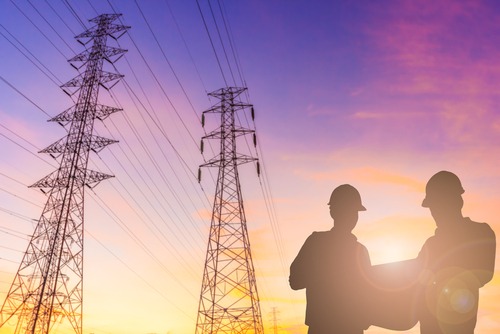NERC: Industry sustains grid reliability amid extreme weather, cyberthreats, inverter issues

Extreme weather is the major risk to resilience of the nation’s transmission bulk power system, with hurricanes causing the largest, longest and most impactful events on the transmission network during 2021, the North American Electric Reliability Corp (NERC) said Thursday in its updated annual reliability report.
“When we look at events over the last several years, it is clear that the bulk power system is impacted by extreme weather more than ever before,” said John Moura, NERC’s director of Reliability Assessment and Performance Analysis. “As we transition our system so rapidly, it is vitally important that we are building and operating a system that can be resilient to the extreme weather we might see in the future.”
While extreme weather topped the list in NERC’s 2022 State of Reliability, the report also identified additional challenges to grid reliability, including increasingly sophisticated and severe cyber and physical threats and what NERC called “the urgent need to integrate the rapidly growing fleet of inverter-based resources used to test grid reliability, resilience and security.”
Yet despite such challenges, operators did maintain grid reliability last year, with one notable exception: the February 2021 Texas and South-Central United States cold weather event that led to the largest controlled load shed event in North American history, according to NERC.
“There are a number of favorable performance trends — including relay misoperation rates, transmission outage severity and frequency of qualified events — that conclusively show industry improvements and commitment to mitigate reliability threats,” said NERC’s Donna Pratt, who manages performance analysis and was the project lead on the State of Reliability.
Pratt noted, however, that the rapidly changing risk profile requires new approaches to navigate reliability effectively. “Significant events in 2021 highlight the need for aggressive action,” she said in a statement released on July 20.
To address such events, NERC is taking several actions.
For example, the Electric Reliability Organization (ERO) Enterprise — which is comprised of NERC and the six Regional Entities — is implementing recommendations from the February 2021 Cold Weather Outages in Texas and the South-Central United States report released last November by NERC, the Federal Energy Regulatory Commission (FERC) and Regional Entity staff.
The more than-300 page report includes recommendations such as revising the mandatory Reliability Standards to require generator owners to identify and protect cold weather critical components, to retrofit existing generating units, and when building new generating units to operate specific ambient temperatures and weather based on extreme temperature and weather data while also accounting for the effects of precipitation and the cooling effect of wind.
The NERC/FERC/Regional Entity staff report also suggests that generator operators perform annual training on winterization plans, among several other recommendations the ERO Enterprise will follow from this report and others, such as the Odessa Disturbance Report and the 2021 CAISO Solar PV Disturbance Report.
In other actions the ERO Enterprise is taking, according to NERC’s 2022 State of Reliability report, are those to encourage registered entities to conduct studies to model extreme natural gas disruptions and to expand and refine resilience and restoration analysis by examining generation and load loss, as well as improving linkages between grid equipment outages and weather data.
The industry also is developing security-informed institutional practices that leverage security frameworks and activities designed to protect and secure the operational and organizational environment, according to NERC, which is working to identify approaches for measuring adequate level of reliability, or ALR, performance objectives where gaps have been identified.
The 2022 State of Reliability specifically identifies system performance trends and emerging reliability risks; reports on the relative health of the interconnected system; and measures the success of mitigation activities deployed, NERC said, adding that leading indicators show that “the bulk power system continues to perform in a highly reliable and resilient manner with year-over-year improvement, demonstrating the success of industry actions.”
